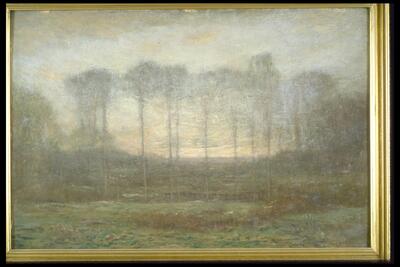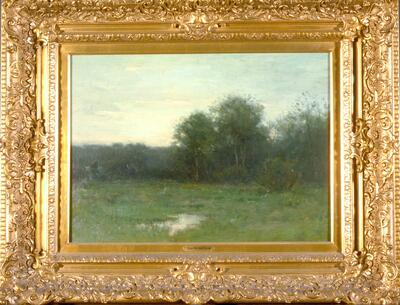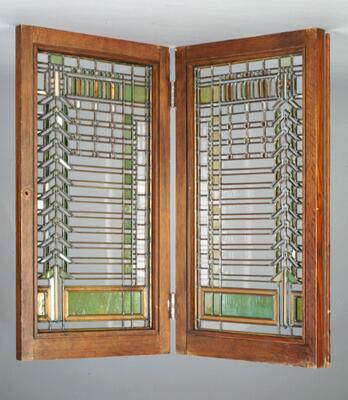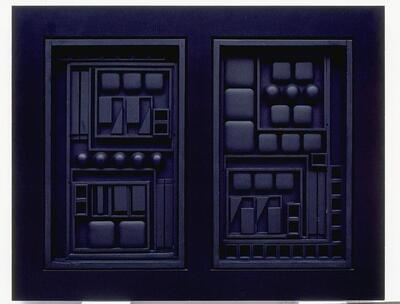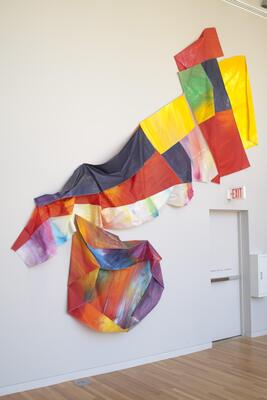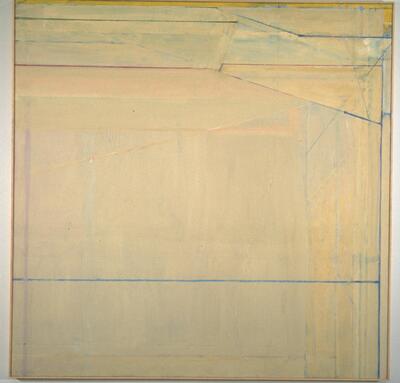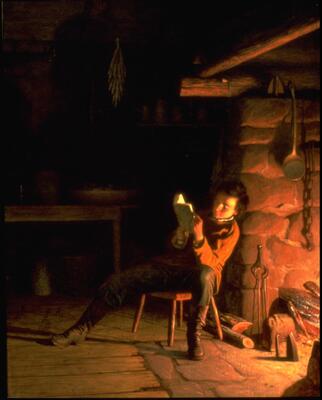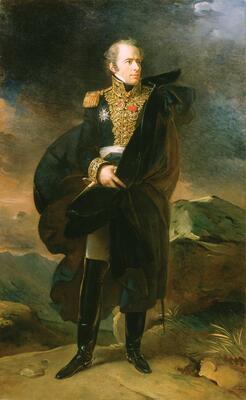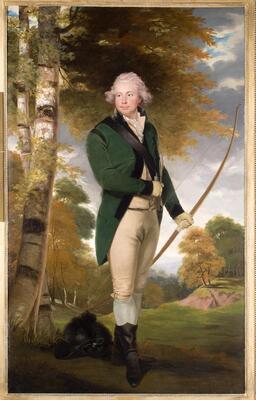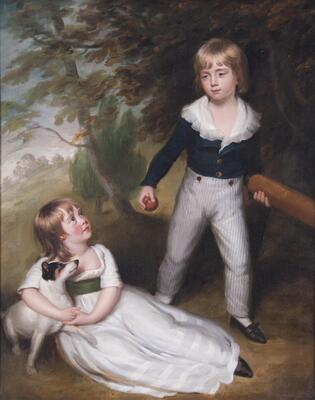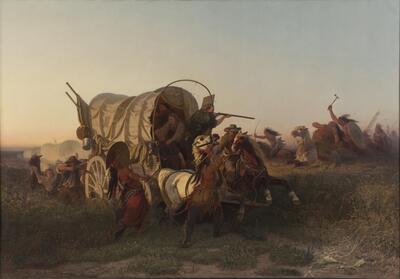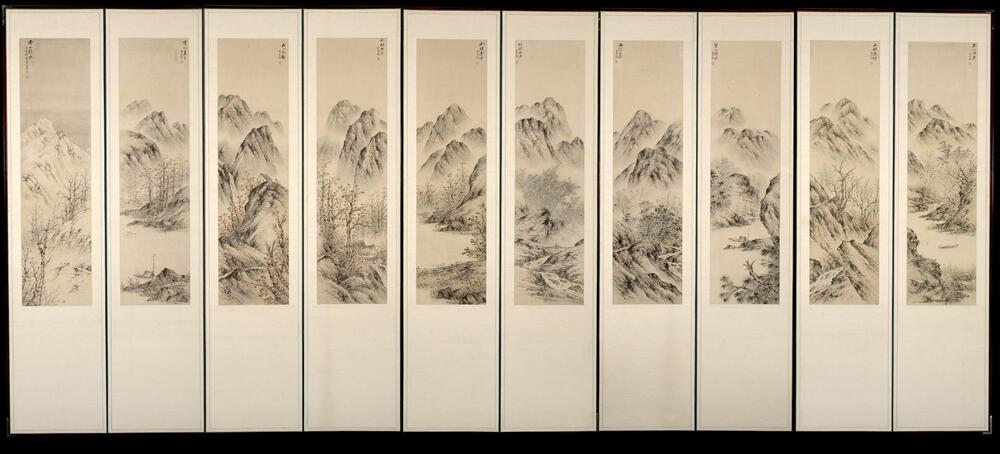Curriculum Tour: Write for Understanding, Look for Inspiration
4th/5th Grade
Discussion: In the introduction to her book, Looking to Write, Mary Ehrenworth talks about “ways to find new entry points for writing by engaging children with the visual arts.” There are times in our work as docents when we wish to have children write as a way to respond to the art, but there are also those occasions when we have an opportunity to use art as an inspiration for writing.
When it is the teacher’s goal to visit the museum with the purpose of generating writing from her students, the tour will naturally depart from the traditional tour and include fewer stops. It may seem that the art is taking a back seat to writing because of the small number of works included in the tour. However, this is an opportunity to spend an extended period of time for close observation and may be a rich aesthetic experience not always available in a traditional tour of 6 stops. Examining a few carefully selected works for writing about in detail will deepen a child’s appreciation for the artist’s craft as she explores her own craft as a writer. Understanding the connection between the writer’s process and the artist’s process emerges as the student connects to the visual arts through writing.Core Curriculum Standards:CS4.3- Demonstrate awareness of words that have entered the English language from many cultures.CS4.5- Explore and begin to use language appropriate for different contexts and purposes.Art Concept: Use a descriptive vocabulary to discuss the visual and tactile qualities in a work of art and interpret the meaning conveyed.MDE:ART.VA.I.4.3 Analyze and reflect on the elements of art and design to communicate ideas.ART.VA.II.4.1 Synthesize the use of a variety of materials, techniques, and processes to problem solve in the creation of art.ART.VA.II.4.4 Analyze and reflect on the uses of subject matter, symbols, and ideas to express and communicate meaning in artwork.ART.VA.IV.4.1 Describe how artwork communicates facts and/or experiences of various cultures.
Core Curriculum Standards:
CS4.3- Demonstrate awareness of words that have entered the English language from many cultures.
CS4.5-Explore and begin to use language appropriate for different contexts and purposes.
Art Concept: Use a descriptive vocabulary to discuss the visual and tactile qualities in a work of art and interpret the meaning conveyed.
MDE:
ART.VA.I.4.3 Analyze and reflect on the elements of art and design to communicate ideas.
ART.VA.II.4.1 Synthesize the use of a variety of materials, techniques, and processes to problem solve in the creation of art.
ART.VA.II.4.4 Analyze and reflect on the uses of subject matter, symbols, and ideas to express and communicate meaning in artwork.
ART.VA.IV.4.1 Describe how artwork communicates facts and/or experiences of various cultures.
|
|
|
|
(CCS Writing 3d) Write to develop real or imagined experiences using descriptive and sensory details.
Engagement Strategies: Have you ever read a book and felt like you were right in the place the author is describing? How did the writer do that?
Questions /Talking Points:
- Landscapes are like the settings of a story. If we use our imaginations and tap into our senses we can be transported to another place.
- Look carefully at the painting. Take some time looking and thinking about what it would be like to be there.
- Now imagine you can shrink yourself and step into the painting. Where are you? Write what you see.
- Describe the light. Where is it coming from? What colors do you see? How do you feel? What is your mood?
- Look up. What do you see? Look down.
- What do you hear? Take a deep breath-What do you smell?
- Reach out and touch something or pick something up. How does it feel in your hands?
- Stop writing. Skip a line and write the word “Suddenly..” and then continue. What happened to your writing?
Stress the importance of writing quickly to get details down. Pause to let them write after each prompt (question). Have them share their writing with a partner before asking for a volunteer to share with the whole group.
Alternatives: Any landscapes in the Apse or Bredt Gallery work well. This is an opportunity to give kids choices. Also any Chinese or Japanese landscape paintings that might be on exhibit.
Possible Props/Activities: Guided imagery activity above. Stress the importance of writing quickly to get details down. Pause to let them write after each prompt (question). Have them share their writing with a partner before asking for a volunteer to share with the whole group.
Stop 2: Tiffany and Frank Lloyd Wright stained glass windows
|
|
<media one of a pair version="quarter" caption="no" float="none"> |
(CCS Reading 3) Compare and Contrast in same genre
Engagement Strategies: Have you ever visited the same place with a friend or family member, but when you returned home you both had completely different memories of the same place? Artists have their own way of seeing the world too, even when they use the same materials.
Questions/Talking Points:
- Both pieces are an artist’s depiction of a wisteria plant (show photo of wisteria)
- What else is the same? Talk to your partner about that and write your ideas of how these are the same in the middle section of your diagram (see Venn Diagram, attached). Share.
- How are they different? List each window’s special characteristics in the outside sections to show how they are different.
- Which one of these artists was a painter and which one was an architect? Why do you think that?
Alternatives: White Territory (Mitchell) and Breakup of the Ice (Monet)
|
|
<media La Débâcle or Les Glaçons version="quarter" caption="no" float="none"> |
Possible Props/Activities: Venn Diagram (see appendix 2)
Show an empty diagram (2 intersecting circles) and if writing, have a blank diagram for every two students to fill in.
Stop 3: White Territory (Mitchell), Black Excursion (Nevelson), Albers Chain (Gilliam)
|
|
|
|
( CCS Lang. 5a ) Using figurative language such as metaphors and similes.
Engagement Strategies: Have you ever looked at something unusual and the only way you could describe it to someone was to say ”This reminds me of…” Poets do this all the time when they use a metaphor or simile. Ex. Bare branches –fingers reaching for the sky.
Questions/Talking Points:
- Abstract art doesn’t always look like anything in real life. But it often reminds us of something that gets us thinking or having a certain feeling.
- Take some time observing one piece of abstract art from modern and contemporary gallery as a model. What do you see? Does it remind you of something, even though it might not look like anything you’ve seen in the real world? Let’s give it a title.
- Do you have a sense of movement when you look at this? Let’s use action verbs to describe what we see.
- A metaphor (or simile using ”like”) is a comparison between what we know and what we want to understand or describe. Let’s make one for this piece. “A rainbow snake” “River of color”
- Let’s end by giving it another title.
Possible Props/Activities: “Something like a Poem”
- Template of a 4 line poem (see appendix 1)
- Create a poem together then invite students to roam the gallery and repeat the activity with a different work of art.
Stop 4: Begin the Beguine or Two Girls Reading
|
|
<media Deux Enfants Lisant version="quarter" caption="no" float="none"> |
(CCS Reading 7) Analyze how visual elements contribute to meaning, tone, beauty…
Engagement Strategies: When we read a good book or watch a good movie we get an emotional response to the experience. Often artists express their emotions and want to tap into the viewer’s emotions through their art.
Questions/Talking Points:
- Take a minute and observe.
- What do you notice? (all responses are accepted-teach into them)
- What is the feeling or mood? How did the artist do that? (This is perhaps a place to give some background on artist/period)
- What is going on? Why do you think that?
- What other details do you notice?
- Follow up this discussion with a written response. Model what you mean by a response- “Music is blaring. Is it a warning of danger?”
- Each of you write your own response on a slip of paper. It will be interesting to see what we come up with collectively.
Possible Props/Activities: Collaborative Poem
- Strips of paper (one for each student)
- Clip boards/pencils
- When responses are written have 2 students arrange the slips for rhythm and meaning. Read out loud in a poetic manner.
Stop 5. Any large piece of art that a small group can gather around successfully (ex: Mitchell, Diebenkorn etc.)
|
|
|
(CCS Writing 8) Gather information in notes-summarize, paraphrase, recall relevant information
Engagement Strategies: When we do research on something that is new, we may struggle with the reading. What do you do when you have to read something in science or social studies that is new to you?
Questions/Talking Points:
- Let’s look at this piece without judgment or any attempt to analyze it. What do you see? Make a list (thick paint in the corner, a blue line running down the middle, etc.)
- Go back now. Think about what you’ve seen and record the thoughts that come into your head about what you’ve noticed. What questions do you have? What do you wonder? How do you feel?
- Looking, thinking and eventually writing for understanding, involves being able to go back and forth between noticing/recording and making meaning of what we see.
Possible Props/Activities: “I See/ I Think” worksheet (T-graph-Appendix 3)After listing 2-3 items and writing a thought in the right column for each have students share with a partner. As they share out their thinking, teach into their work with information about the painting/artist.
Stop 6. Portraits in the Davidson Galery or Apse
|
|
|
|
|
|
Media with slug 1731-1802 does not exist
|
<media M. Bachelier, Directeur des fermes de<br>1715<br>oil | canvas<br>Museum Purchase<br>1968/1.76 (undefined-br-m-bachelier-director-of-customs-at-lyon-m-bachelier-directeur-des-fermes-de-br-1715-br-o version="quarter" caption="no" float="none"> |
(CCS Reading 3,6) Use details to determine how characters respond… or speakers reflect…Describe narrator’s point of view.
Engagement Strategies: If you were to hire a famous photographer to take a picture of you for a magazine cover, what would you be doing? What would you wear? How would you want the rest of the world to see you?
Questions/Talking Points:
Artists were hired to paint a person’s portrait much like a photographer might be hired to take a special picture today.
- Choose a portrait. Spend some time looking. Become the person in this portrait. How do you feel? What are you looking at?
- What is in the picture with you? Tell us why they are there. Include lots of details in your writing to help the readers imagine the portrait, even if they can’t see it.
- What are you doing? What’s one thing about you that we can’t see? You might begin a line with “Once I…” or “Sometimes I feel as if…”
Possible Props/Activities:
- Writing paper/clip boards to jot down responses to prompts.
- What they take with them might become, with work, a character sketch or a poem.
Stop 7: Heda, Willem Claesz-Vanitas
<media Still Life version="half" caption="no" float="left">
(CCS Writing 3d) Write to develop real or imagined experiences using descriptive and sensory details.
Engagement Strategies: How many of you like to take photos? What makes a good photo? Sometimes we take pictures of large scenes, like the grand canyon, and sometimes we like to “zoom in” on single people or objects in a scene. Photographers are like writers and painters in the way they take a snapshot of life. Writers have a built in camera with a zoom lens. Let’s practice using ours.
Questions/Talking Points:
- Look at the painting and imagine yourself in this place. Write one line on your paper to describe the large view (ex. In the room there was a table)
- Now turn that imaginary zoom lens one notch and describe one object. Notice texture, bumpy, smooth, slippery; notice light, color, even shape.
- Now turn the zoom lens to get in even closer on a single object and say even more about it. Push yourself to get as close as you can.
- Read what you have to a partner. Ask for volunteers to share.
- What details made this painting seem real?
Possible Props/Activities:
- Camera with a zoom lens
- Writing materials
Stop 8: Cache-cache
(CCS-Writing 3a) Write a narrative with a clear sequence of events. Writing from a lead.
Engagement Strategies: Everyone loves a good story. One way to enjoy art is to use the details in the work andimagine a story. What happens when you go to the library and read the first line of a book? (makes you want to go onor put it back on the shelf)
Questions/Talking Points:
- The first line of a story engages the reader to read on
- What do you think is happening in this picture?
- Work with a partner or alone and create a “lead” (opening line) Go around the group and share leads.
- Write your own lead on the top line of your paper
Give everyone time to free write, just allowing ideas to grow out of the lead. Encourage them to look back at the painting’s details for ideas of how to move the story forward if they get stuck.
Possible Props/Activities: Have several leads made up of your own, as examples. Clip boards, paper, pencils
Alternatives:
Digby Children-Hoppner
Attack on an Emigrant Train- Wimar
Picasso- Two Girls Reading
|
|
|
<media Deux Enfants Lisant version="quarter" caption="no" float="none"> |
Stop 9: Korean Four Seasons Screen or Kimona (with nature scenes)Pottery with nature motifs, Any scroll or screen in Japanese gallery, Prints in the drawers
(CCS-Writing 3d)Use concrete words and phrases and sensory details to convey experiences.
Engagement Strategies: How many of you have seen something in nature that you wanted to take a picture of? A Japanese haiku is an ancient type of poetry that is a snapshot in words? (Pass out a sheet with several examples. Read them together.) What do we know about haiku after reading these poems? Enumerate -Make sure they come up with 3 lines 5-7-5 syllable structure. Also that theme of nature and capturing a single moment in time. Simplicity.
Questions/Talking Points:
- Share information on calligraphy and poetry found on scrolls if using those.
- Choose a piece in the gallery and spend time with that piece. Write own haiku following the structure from the study done earlier.
- Share haiku with a partner or with the whole group.
Possible Props/Activities: Clip boards, pencils, handout with haiku examples (see appendix 4)
Rate this Resource
AVG: 0 | Ratings: 0
& Author Notes
No copyright restrictionsLast Updated
March 6, 2017 1:19 a.m.Report
Reporting Policy
